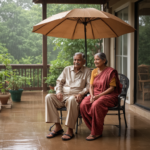Sensation versus Perception
<back next> — index
By the end of this section, you will be able to:
- Identify different senses beyond the basic five.
- Explain the concept of sensory adaptation.
- Explain the role of the vestibular sense.
- Recognize the impact of body movement sensations.
Understanding the way we perceive the world through our senses is a fascinating area of study. We have more than just the basic five senses that we’re familiar with, and our ability to sense things can be influenced by various factors.
In this section, we’ll explore the concepts of sensation and perception, as well as the roles of attention, motivation, and sensory adaptation in shaping our experiences. The book chapter is a good source to learn more.
We’ll also delve into the intriguing field of the vestibular sense, which governs our sense of balance and movement in space. Additionally, we’ll touch upon the impact of body movement sensations at different stages of life, shedding light on how our bodily experiences evolve as we mature.
Download Sensation versus Perception four page supplement document (pdf)
More than five senses!
Our senses help us understand the world around us. We have more than five senses; we can also sense balance, body movement, pain, and temperature. Our ability to sense things can vary; sometimes, we can pick up on things even if we’re not fully aware. Our senses can even adapt to certain stimuli over time. When we sense something, our brain interprets the information we receive from our senses.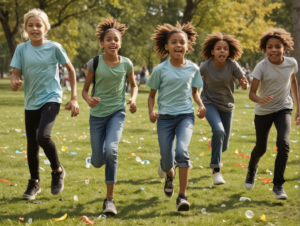
Our experiences and knowledge also influence how we perceive things. For example, when we smell something, it triggers our sense of smell and brings up memories or thoughts.
Sometimes, our senses get used to certain things, and we stop noticing them. This is called sensory adaptation. For example, when we enter a room with a ticking clock, we might not see the sound afterward.
An example: Sense of balance
The sense of balance, also known as the vestibular sense, is mainly controlled by the vestibular system found in the inner ear. This system, made up of fluid-filled canals and chambers, sends information to the brain about our body’s position and movement in space. It helps us keep our balance, posture, and coordination.
The connection between balance and the inner ear was discovered by a scientist named Étienne-Jules Marey in the 19th century. He conducted research on the inner ear and its role in the body’s sense of balance and spatial orientation.
 The sense of balance is important to psychology because it helps us understand how we move and how we feel about our surroundings. It also affects how we think and how we handle our emotions. When our balance is off, it can impact how well we think and feel. So, psychologists study balance to learn more about how it affects our minds and feelings.
The sense of balance is important to psychology because it helps us understand how we move and how we feel about our surroundings. It also affects how we think and how we handle our emotions. When our balance is off, it can impact how well we think and feel. So, psychologists study balance to learn more about how it affects our minds and feelings.
Our sense of balance contributes to our overall sense of well-being and affects how we perceive the world around us.
If our sense of balance is off, it can lead to psychological effects such as feelings of disorientation, dizziness, anxiety, and difficulties with concentration and cognitive tasks. It can also impact our emotional well-being, leading to feelings of frustration, stress, and even fear in some cases.
Additionally, disruptions in the sense of balance can affect our overall sense of control and confidence, which can have psychological implications.
An example of a rare disease that influences a sense of balance is Ménière’s disease – affecting about 0.2 percent of the population (two out of 1,000 people). It is a degenerative disorder of the inner ear that can cause vertigo, hearing loss, tinnitus (ringing in the ears), and a feeling of fullness or pressure in the ear.
Sensations of body movement
Age-stage differences in body movement sensation
Erikson believed that the sense of body movement and its recognition change as people mature through various stages of life. Each stage presents opportunities for individuals to develop a different aspect of their identity and understand the world around them uniquely.
Trust vs. Mistrust: When trust is established in early infancy, there is a sense of comfort and security in bodily movement.
 Autonomy vs. Shame and Doubt: As they understand autonomy, toddlers experience a sense of exploration and independence through their bodily movements.
Autonomy vs. Shame and Doubt: As they understand autonomy, toddlers experience a sense of exploration and independence through their bodily movements.
Initiative vs. Guilt: Children in this stage may feel a sense of purpose and direction in their movements as they explore their social and physical environments.
Industry vs. Inferiority: School-aged children may experience a growing awareness of their physical capabilities and limitations, influencing their movement sensations.
Identity vs. Role Confusion: Adolescents may grapple with their changing bodies and movement sensations as they seek to establish their unique identities.
Intimacy vs. Isolation: Young adults may experience a heightened awareness of their body’s responses during intimate interactions as they seek to form close relationships.
Generativity vs. Stagnation: Adults may find satisfaction in using their bodies to contribute to the well-being of others, whether through physical care or other forms of support.
Integrity vs. Despair: In later stages of life, individuals may experience a range of bodily sensations as they reflect on their life experiences and achievements and come to terms with the physical changes that occur with aging.
Recognition of body movement and control in childhood
Toddlers like to do things independently and learn what they can do with their bodies. They learn by touching things and playing with objects.
A long time ago, toddlers used to play outside, such as climbing, running, and exploring nature. But now, kids today spend a lot of time playing with screens and technology. This is different from before, and it shows how society has changed.
When kids go to preschool, they start to do things on their own and have fun in their way. A while ago, when families were different, preschool-age kids would stay at home and play and talk with their brothers, sisters, and other family members.
Compared to today, when many parents work, kids go to a daycare or preschool. This changes the way kids move and play when they’re little.
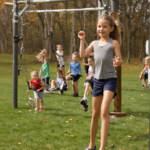 In elementary school, kids get better at doing things and learn more about being with others and attending school.
In elementary school, kids get better at doing things and learn more about being with others and attending school.
A long time ago, kids in elementary school had more free time to play outside during recess and take more gym classes. This let prior generations do more and learn about their bodies.
But now, kids only have a little time to play at school, and they only have a few gym classes. This might change how they move and control their bodies in elementary school.
The way children play and learn has changed over time. In the past, they spent more time outside, but now often engage with screens and technology. Additionally, the structure of preschool and elementary school has evolved, impacting children’s movement and play.
Body movement sensations in high school
In high school, the focus on physical activity often shifts towards formal athletic programs and intramural sports. Many students participate in structured team sports that offer a competitive and organized approach to physical fitness and skill development.
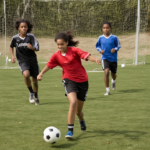 Additionally, intramural sports provide opportunities for recreational and less competitive engagement, allowing students to stay active and socialize in a more relaxed setting. These programs play a significant role in shaping students’ overall physical development, teamwork skills, and social interactions during their high school years.
Additionally, intramural sports provide opportunities for recreational and less competitive engagement, allowing students to stay active and socialize in a more relaxed setting. These programs play a significant role in shaping students’ overall physical development, teamwork skills, and social interactions during their high school years.
In recent years, high school students have experienced an increase in sedentary behavior due to the prevalence of video games. Unlike previous generations, many students now spend long hours sitting and playing video games, leading to reduced physical activity compared to engaging in outdoor and sports-related activities.
This shift towards more sedentary leisure activities may have implications for the overall health and well-being of high school students, highlighting the need for promoting a balanced approach to recreational activities and physical fitness.
Recognizing pain
Not everyone feels pain the same way. People have different reactions to pain because of things like genetics, personal experiences, emotions, and culture. Some can handle pain better, while others feel a lot of pain from even small things. How people understand and react to pain is unique to each person.
Pain helps protect us. It’s our body’s way of telling us that something is wrong. When we feel pain, we know to stop doing something that could hurt us. Whether it’s a quick pain or something more long-lasting, pain keeps us safe by making us pay attention to our health.
 Sometimes physical and emotional pain are connected. This means that feeling physical pain can affect our emotions, and being upset can make our bodies hurt. Conditions like ongoing pain, fibromyalgia, and certain headaches are examples of how physical and emotional pain can be linked.
Sometimes physical and emotional pain are connected. This means that feeling physical pain can affect our emotions, and being upset can make our bodies hurt. Conditions like ongoing pain, fibromyalgia, and certain headaches are examples of how physical and emotional pain can be linked.
Stress and trauma can also make people feel physical pain. Understanding this link helps doctors give people the right care for their pain.
The sensing of heat and temperature
Temperature and heat are related but different. Temperature measures heat. Our body can feel when there is heat or when there isn’t. Our brain controls our automatic responses to heat, even though we are not aware of it.
It’s interesting to know that our reactions to heat are not just natural. They are also learned, which shows how we can adapt and how our environment affects our bodies.
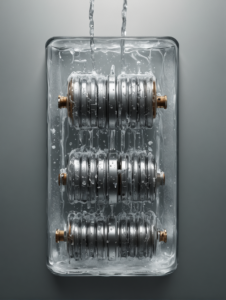 Imagine a cool device that has two metal coils. One has warm water running through it and the other has ice water. Our brain thinks the ice water is very cold and the warm water is hot, even though they’re right next to each other. This shows how our brain can sometimes be tricked into thinking things are hotter or colder than they really are.
Imagine a cool device that has two metal coils. One has warm water running through it and the other has ice water. Our brain thinks the ice water is very cold and the warm water is hot, even though they’re right next to each other. This shows how our brain can sometimes be tricked into thinking things are hotter or colder than they really are.
This relates to psychology because it shows how our brain senses and reacts to things like heat. It’s about how our brain processes information from our senses and how our past experiences can affect how we respond to things.
The example with the warm and cold water helps us understand how our brain can be tricked by what we feel, and how our thoughts and feelings are connected to our physical experiences.
Aromas, odors, and memories
Our sense of smell is deeply connected with many memories from the past. When we encounter a familiar scent, it can bring back vivid memories of people, places, or experiences. For example, the smell of freshly baked cookies might remind us of holidays spent with loved ones.
Our sense of smell is a protective factor, such as avoiding spoiled food. It helps us detect if food has gone bad, keeping us safe from potential illness. If something smells off or unpleasant, it’s a sign that we should avoid consuming it.
Your mood and the smell of rain
Serotonin and mood
Why, though?
Rain hitting healthy soil releases geosmin into the air that can travel as fast as the wind and for extraordinarily long distances. Since we can detect geosmin in small amounts, it activates our brain and other body functions from serotonin and noradrenaline.
Magic pheromones!
Pheromones are chemicals released by humans and animals that can influence the behavior of others of the same species. They may play a role in sexual attraction and mate selection by conveying information about genetic makeup, reproductive status, and overall health. However, the specific effects of pheromones in humans are still being studied.
Research has shown that scent plays a role in attraction and mate selection. People may be drawn to the natural body odor of potential partners, and certain scents can even enhance feelings of romance and intimacy.
Olfactory hallucination, and phantosmia
The experience of smelling things that aren’t really there, like strong smells of acetone or something burning, is related to how our brain processes information from our senses.
This kind of thing falls under the study of how we perceive the world around us, which is part of psychology. Scientists might look at how our brains interpret smells and how different factors, like our thoughts and feelings, can make us experience these fake smells.
The perception of the smell of burning wood, also known as phantosmia, is a common experience reported across various cultures. This olfactory phenomenon, where individuals perceive the odor of burning wood without any external source of the smell, appears to transcend cultural boundaries.
 The shared experience of detecting the scent of burning wood in the absence of any actual fire suggests that this particular olfactory illusion may have universal aspects that transcend cultural differences.
The shared experience of detecting the scent of burning wood in the absence of any actual fire suggests that this particular olfactory illusion may have universal aspects that transcend cultural differences.
It would be interesting to explore the psychological and anthropological aspects of this shared olfactory perception across different cultures.
Phantom limb sensation
Experts don’t know exactly why phantom sensation happens. Phantom sensations, sometimes known as phantom limb pain, occur when an individual feels sensations or pain in a limb that is no longer there.
 This phenomenon is often reported by veterans who have undergone amputations. Many experts believe that the experience of phantom sensations could be linked to post-traumatic stress disorder (PTSD) in veterans.
This phenomenon is often reported by veterans who have undergone amputations. Many experts believe that the experience of phantom sensations could be linked to post-traumatic stress disorder (PTSD) in veterans.
The emotional trauma associated with combat experiences may manifest in the form of phantom limb pain, as the brain attempts to process the distressing memories and sensations related to the loss of a limb.
In another context, the prevalence of sugar diabetes among the elderly and overweight individuals has been linked to an increased risk of depression. Managing diabetes can be a physically and emotionally demanding task, and individuals living with diabetes are at a higher risk of developing depression. The stress of managing the condition, potential health complications, and the impact on daily life can contribute to feelings of sadness and hopelessness.
Furthermore, in the manufacturing sector, accidents and injuries often occur, leading to traumatic amputations or severe injuries. Workers who experience such incidents may later report phantom sensations associated with the lost limb. The psychological impact of such accidents can be substantial, and individuals may struggle to come to terms with the physical and emotional ramifications of their injuries.
CBT can help
The field of psychology that deals with phantom sensations and the psychological impact of amputations and traumatic injuries is often clinical psychology and neuropsychology. These psychologists focus on understanding and treating mental, emotional, and behavioral issues, especially those related to trauma and physical health problems.
One helpful type of therapy for dealing with the psychological effects of phantom limb pain and traumatic injuries is cognitive-behavioral therapy (CBT). CBT helps people recognize and change negative thoughts and behaviors that contribute to their distress.
Another therapy that may be beneficial is exposure therapy, which involves gradually facing the source of trauma in a safe way to help process and reframe emotional responses. In general, a combination of psychological support, physical therapy, and medical care can be useful in helping people cope with the emotional and physical challenges linked to phantom sensations and traumatic injuries.
Summary
Our senses help us understand the world, and we have more than the usual five senses. This section explores the differences between sensation and perception, as well as the impact of attention, motivation, and sensory adaptation on how we perceive things.
It also looks at the sense of balance and its connection to our emotions and thoughts, and discusses how disruptions in balance can affect our well-being. Additionally, it touches on the changes in body movement sensations as we grow and mature, showing how our bodily experiences evolve through different stages of life.
The study of our senses and perception is crucial in psychology as it helps us understand how we interpret the world around us. By examining sensation and perception, psychologists gain insights into how our attention, motivation, and adaptive behavior influence our experiences.
Understanding the intricate connection between our senses, emotions, and thoughts, such as the impact of disruptions in the sense of balance on our well-being, allows psychologists to explore the profound effects of bodily sensations on our mental and emotional states at different stages of life.
This knowledge contributes to a deeper understanding of human behavior and how we navigate our psychological well-being in various situations.



